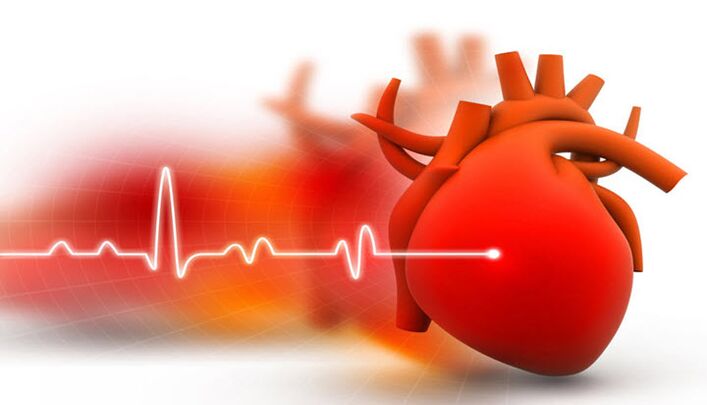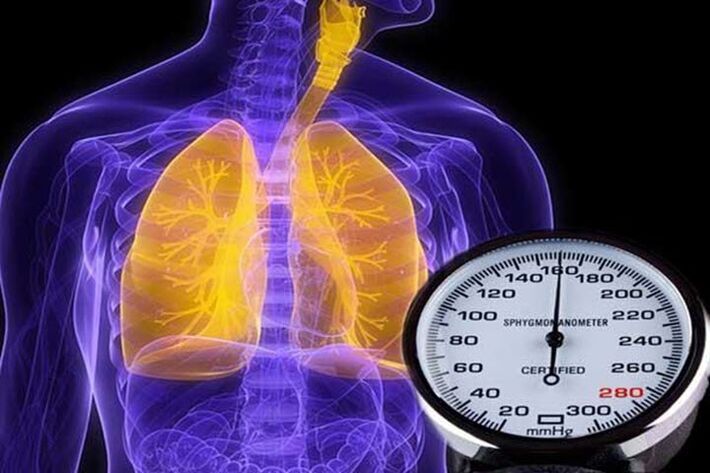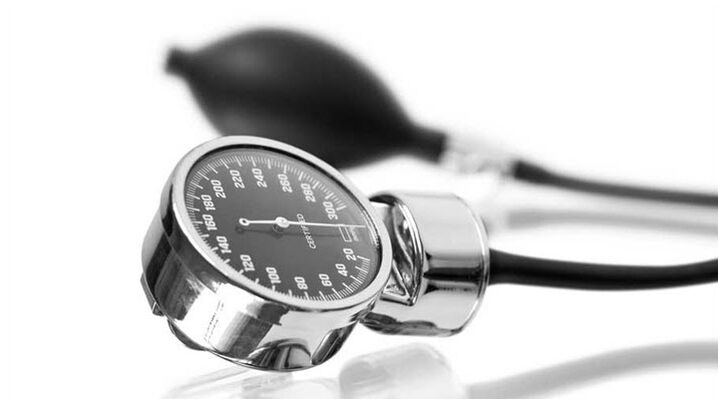According to medical statistics, hypertension is a frequently detected violation of the cardiovascular system. Developing hypertension has a negative impact on vessels: it reduces elasticity, increases fragility. Such a process leads to internal bleeding. Often, persistent high blood pressure leads to the development of a deadly pathological condition: cardiac ischemia, myocardial infarction or stroke.
Early diagnosis of hypertension, timely prescribed treatment allows the patient to avoid the manifestation of changes that could worsen health indicators or lead to death. People nearly forty years of age and older should constantly monitor blood pressure values, have a blood pressure monitor at home, and seek medical help if symptoms of other illnesses are detected.
Causes of hypertension
What can cause hypertension in a person? What factors can trigger its progress? Such questions remain relevant, they are asked to doctors by people interested in their state of health. Persistent high pressure values can cause certain changes in the functioning of the human body. The following diseases are affected:
- vessel conditions that accompany atherosclerosis;
- heart failure;
- diabetes;
- gout;
- rheumatoid arthritis;
- renal pathology.

Other factors contribute to the development of hypertension. The causes of this disease are associated with:
- heredity: pathology most susceptible to children whose parents were diagnosed with hypertension;
- age (over 45 years) and gender (higher morbidity rates among men);
- overweight and obesity arising for various reasons (dysfunction of the body, low mobility, eating foods high in animal fat, salt, overeating regularly);
- injuries to the skull and brain;
- cholesterol levels increased significantly from the norm;
- hormonal changes in the female body during menopause;
- alcohol abuse, smoking, addiction to caffeinated beverages;
- complications after an infectious or viral disease;
- ignore walking prefer to be indoors without fresh air.
High blood pressure accompanies patients whose unstable emotional state is the norm. Psychological discomfort, attacks of aggression or anger, being under stress, tragedies of personal life increase the value of indicators.
Classification and ranking of diseases
Two methods are used to classify the problem of hypertension - according to the etiology (cause of occurrence) and according to the stage (stage) of development.
In cases where the nature of high blood pressure cannot be determined with certainty, the doctor will announce a diagnosis of primary (essential) hypertension. It is the most common, observed in 95% of patients. The remaining 5% of people have a secondary form of the disease, which is an additional manifestation of other pathologies, which require their therapy.
The three stages of the process will differ in their symptoms and severity: mild, moderate and severe.
Mild levels of hypertension are characterized by an increase in blood pressure within the boundaries:
- systolic blood pressure from 140 to 159 mm Hg. st;
- diastolic blood pressure from 90 to 99 mm Hg. Art.
The course of the disease at this stage is not complicated by pathology of internal organs, often occurring without obvious symptoms.
With the average form of the disease, blood pressure values are in the range of 160–179/100–109 mm Hg. Art. The patient's heart, kidneys begin to suffer, the condition of the retina changes, atherosclerotic plaques form in the vessels. In most cases, functional changes occur invisibly.
Severe third -degree hypertension combines diagnosable pathologies of the heart, brain, organs of vision, vascular system and blood pressure indicators exceeding 180/110 mm Hg. Art. There is a high risk of hypertensive crisis

Characteristic symptoms
Early and middle stage hypertension may not cause symptoms, which is a dangerous factor for patients. The main symptoms that indicate the development of a pathological condition are headache and dizziness. They accompany patients frequently and for a long time, occur due to spasm of the cerebral vessels, their narrowing. Additional symptoms are general weakness, fatigue, nausea, feeling of tinnitus, blindfolds in front of the eyes.
People with hypertension experience other symptoms of high blood pressure:
- decreased vision, feeling that the eyes are crushing;
- frequent nosebleeds;
- increased intracranial pressure;
- short -term loss of consciousness;
- emotional instability, mood swings;
- development of insomnia;
- physical activity causes severe redness of the facial skin;
- vomiting that has no nutritional cause;
- rapid pulse and heartbeat;
- changes in memory, its deterioration;
- significant swelling of the legs, face.
Signs of high blood pressure during the development of severe disease stage are accompanied by complications of the heart and blood vessels: heart failure, arrhythmias, angina pectoris, myocardial infarction. Symptoms of hypertension are combined with renal failure, changes in blood supply to the brain, microstroke, stroke.
Symptoms of hypertension may be present in patients in different combinations, having the nature of different manifestations: stable, strong, once. A special feature of this disease is that a person is dominated by high blood pressure.

Diagnostics
Sufficient grounds for a complete examination of the patient in case of suspected development of hypertension in himself are three cases of increase in pressure indicators within a month. These symptoms should not be ignored.
Patients are recommended to independently take measurements using a tonometer several times a day, and record the results. In the case of medical institutions, diagnostic methods such as daily monitoring of blood pressure are used. The instrument records pressure values during the day (every 15 minutes) and at night (twice an hour).
To determine changes in body function, clinical blood and urine tests given to patients allow. Indicators of cholesterol, protein, potassium, calcium, glucose, hemoglobin levels, lipid spectrum are important to diagnose the disease.
The presence of characteristic signs of high blood pressure and the development of hypertension is indicated by improper function of the heart muscle. For the study, the following methods were used:
- auscultation - with the help of a phonendoscope, the sound produced by the organ is heard, the rhythm of its work is observed;
- ecg - decoding of the electrocardiogram taken from the patient allows a detailed assessment of the function of the heart for a certain period of time;
- ultrasonic diagnostic and echocardiographic methods reveal myocardial and valve defects, allowing to correlate the size of the atria, ventricles;
- Doppler studies make it possible to assess the condition of the vessel;
- arteriography - the results of monitoring inform about changes in the walls of arteries, their damage, the location of cholesterol plaques.
If hypertension is suspected, fundus examination, diagnostic ultrasound of the kidneys and renal arteries, adrenal glands are prescribed.

Therapeutic measures
Treatment of hypertension involves the use of medications that can maintain near-normal pressure. In cases where a secondary form of pathology is established, therapy involves getting rid of the disease, the main cause of increased stress in the patient.
List of drugs
Eliminating high blood pressure values will help to take the medication strictly according to the doctor’s instructions. The first stage of hypertension does not require medical treatment, patients are recommended to change lifestyle and diet habits. Moderate and severe forms of the disease must be controlled using a group of drugs:
- diuretics (thiazides) contribute to the natural production of fluid accumulated in the tissues of patients, reduce their swelling, resulting in increased vascular patency;
- beta blockers correct heart rate;
- sartans - a one -time intake of funds can normalize blood pressure, maintain the results obtained for a day;
- calcium antagonists correct cardiac activity, prescribed for severe angina pectoris, arrhythmias;
- angiotensin converting enzyme inhibitors dilate blood vessels, preventing their spasms;
- alpha-adrenergic blockers improve the condition of peripheral ducts.
The doctor prescribes a specific drug or a combination thereof for each patient, taking into account the general condition of the patient, the corresponding disease.
Give first aid at home
Cases of uncontrolled increase in blood pressure in hypertensive patients are not uncommon. With the sudden deterioration in his condition, relatives were advised to immediately call an ambulance. Prior to his arrival, the following steps must be taken:
- eliminates panic in hypertensive patients, calms them: stressful conditions help improve blood circulation, increase stress;
- the condition can be improved by taking herbal sedatives (Corvalol, motherwort, valerian);
- it is important to place a person comfortably, he is recommended to sit in a comfortable position, lean back, relax;
- it is required to apply cold compresses to the front area, while the feet should be warm (you can use a heating pad or mustard plaster);
- immediate intake of medication recommended by a doctor is necessary;
The process of giving first aid is accompanied by the removal of blood pressure indicators (every 10 minutes), the results of measurements should be recorded in writing, then the sheets should be submitted to the doctor.
General Prevention Tips
Prevention of hypertension consists of a set of measures. Doctors advise changing lifestyle, diet, using people's experience to normalize the situation.
Medical institutions will point out the extraordinary dangers for hypertensive patients from alcoholic beverages and smoking, and advise them to give up. Moderate physical activity, leisurely walks in nature, light work are indicated.
Improving the patient's condition contributes to the transition to a special diet. Pickles and smoked meats, fried foods, fatty meats should be avoided, and fresh bread should not be eaten. Vegetables, fruits, herbs, dietary meats and dairy products, cereals (rice, buckwheat), legumes should be the main ingredients for the new menu. Patients should take salt, sugar and fluids in moderation.
Folk treatment methods, known for a long time, will not allow increased stress. Infusions and decoctions, based on medicinal herbs, bee products, vegetables or nuts, and other components, are selected individually in the required proportions.



























